Preparation for working on the road and different projects
Working on the road is very different from working in the studio. I photograph buildings all over the world, which of course requires travel. These journeys can be short or long and I may also have to photograph several buildings in one place for a particular project. These projects, as I have already explained, can either be works of art that I produce on my own initiative, or they can be commissioned works. It can also happen that I am invited on these long trips, but if I go on them of my own interest, then I get as many books as possible about the city before the trip, so that I can look at the buildings beforehand and assess whether the trip is worth it, as there are of course many financial costs involved for me. Now, when I travel to a city, it helps to have someone there guide me, so in London a collector guided me through the city and in Russia something like that was organised through contacts at the museum. The time in Russia was extremely exhausting, I had to get up early at four o'clock in the morning, then I had to drive for a few hours to the next company, then I had to look at everything and decide which motif to photograph from which perspective, then I had to go back in the evening and most of the time I just fell into bed exhausted. The genius loci project was about Georg Wilhelm Henning, the museum wanted to have a project that would show the connection between Siegen and Katharinenburg, because Georg Wilhelm Henning from Siegen founded the town of Katharinenburg. The project is based on its history, it also deals with the knowledge of metal. It is also about how it is found and processed in the oral carried, industrial architecture also plays a major role. Since metal has two states, liquid and solid, I have carried both into my pictures, on the one hand there is something moving and on the other something static in the works. I was aware of the photographic knowledge Siegen carries, especially in relation to industrial photography through Bernhard and Hilla Becher, and also that I had to develop a different approach than they did.
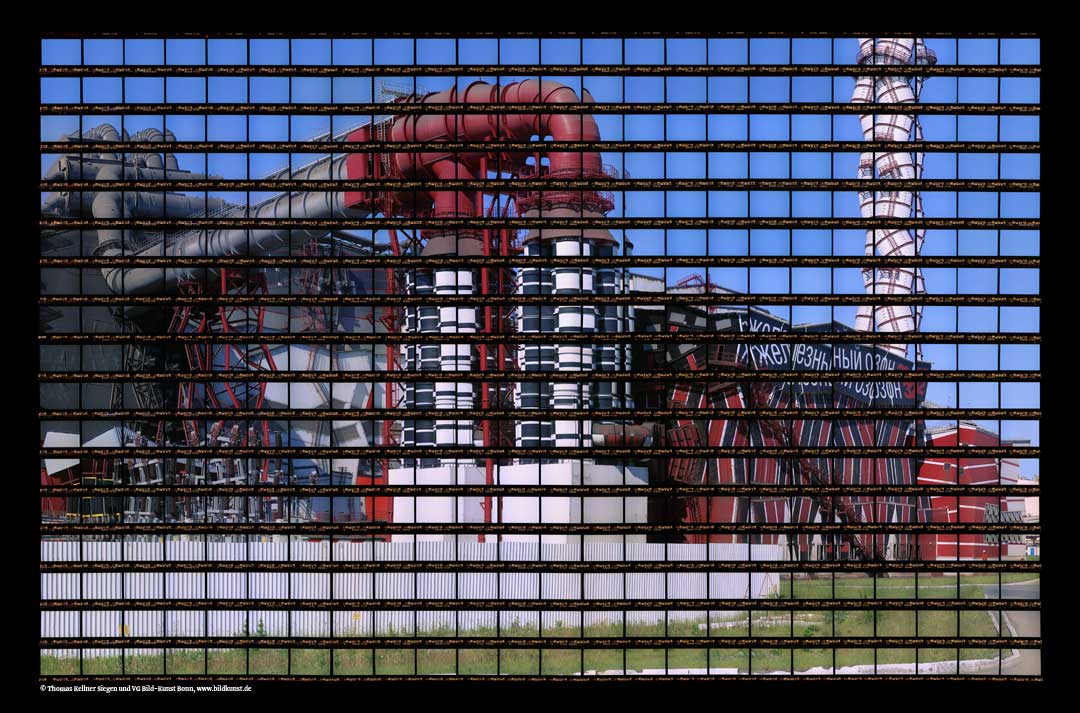
Life during the journeys in the past and today
When I travel, I often only have a small flat and internet only in the museum, which gives me a lot of time to reflect on myself. I then often continue to work on my sketchbook and develop ideas. In the first years when I travelled, I didn't even have a laptop, at most I had my mobile phone with me. There was only the sketchbook and the camera, and in the evenings I wrote down my travel reports and my impressions, so the sketchbook partly developed into something like a diary for me. In 2006, however, this time for reflection was lost to the laptop. In the meantime, working while travelling is like being in my own office, only with a different view, and it doesn't matter whether I'm in New York or somewhere else. The work on the laptop, i.e. the communication and social media work, continues when the photography is done on location. With increasing digitalisation comes unconditional accessibility; the banking crisis in 2008 made it all the more important to react immediately to an event. But despite all the work, you still have a little free time on your travels, during which you can get to know the country and the people. With scholarships or assignments, you already have to deal with local people anyway, which makes it easier to get to know the culture there better. However, there is of course something unpleasant like jet lag, because of the time zone change it can happen that you sleep for 14 hours on the first day. But for me, travelling is still the best part of my job, and some projects are deliberately designed so that you see as much of the world as possible.
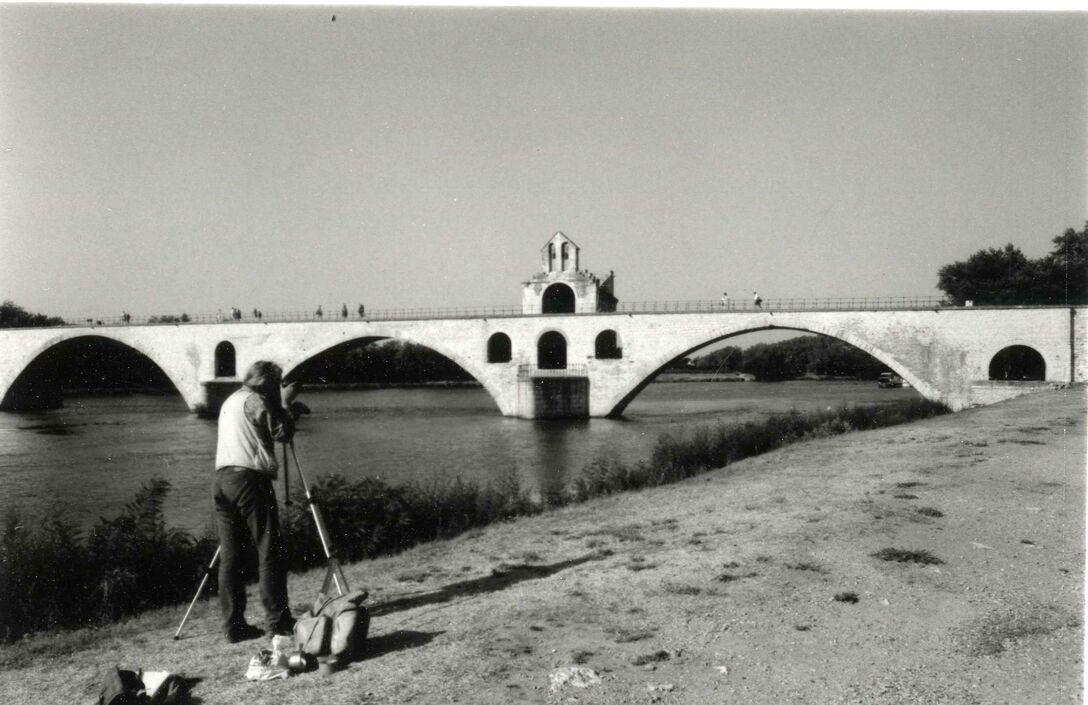
Difficulties when travelling, a story from Greece
But on my travels I am often confronted with difficulties. For example, it can happen that you are not allowed to take photographs; this turned out to be a problem with St. Peter's Basilica in Rome, and also in Mexico you can only go out in the evening with a bodyguard. In China, on the other hand, everything went surprisingly smoothly, but even in Moscow there were conflicts because of the camera. I can tell you an anecdote about the Acropolis in Greece. When I was there, the entrance to the Acropolis was free, so I went up and looked at the Acropolis, but I did so without a camera. The next day, the ticket booth at the entrance was manned and there I was asked for my camera, which I carried this time. Photographers are not allowed at the Acropolis and because of the tripod I was considered a professional photographer and not an artist. So I tried to get permission to shoot at the city hall, at first I waited there for ages and finally had to leave my tripod downstairs, but I was able to go up to the Acropolis with the camera. There I improvised and used my forearm as a tripod and finally managed to take many pictures despite everything. In the end, I was asked several times via e-mail and fax what I had done there, I then pretended to be a student and there was a huge discussion, but in the end I still didn't get permission for the pictures. My luck was that due to the financial crisis all legal situations changed and I was therefore allowed to use the pictures. The problem that this discussion comes from in the first place is that the Acropolis is often used for products.
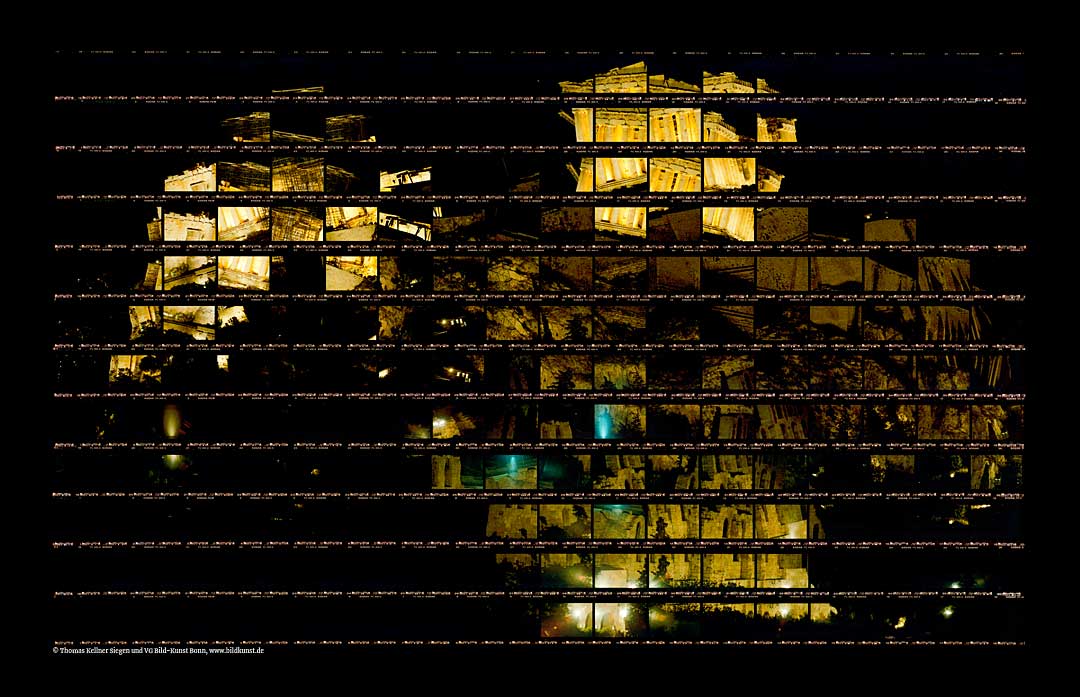
A stroke of luck in Rome
Another story took place in Rome. Even during the months of planning for the trip, there was a lot of uproar about the fact that the Pope at the time was about to die. He eventually did die, but the hotel for the trip was already booked there, and a new Pope was to be inaugurated in Rome at exactly the time I was planning my trip. So the city was being prepared for the inauguration, everything was cordoned off and the carabinieri also banned anything like the use of tripods at the cathedral. So I looked for a way out and came up with locating the borderline between Italy and the Vatican and just siding with the Vatican. But the Papal Swiss Guard forbids tripods on that side of the country as well. Accreditation was open to the press until Tuesday, but I was not in Rome until Thursday, so I was too late. However, the room to the Press Office was open and I took my opportunity and entered. I remember it was a high room with wooden chairs. I waited in that room and was eventually called into another room. The people in charge there first thought I was interested in photographing the Pope and explained to me that it was not possible in the current situation. But when I started to explain to them who I was and what I was doing and showed them my sketchbook, one of them recognised my work. That was my great luck. He made it possible for me to get time and permission and a pass to take photographs and so I was finally able to capture the cathedral in a work of mine.
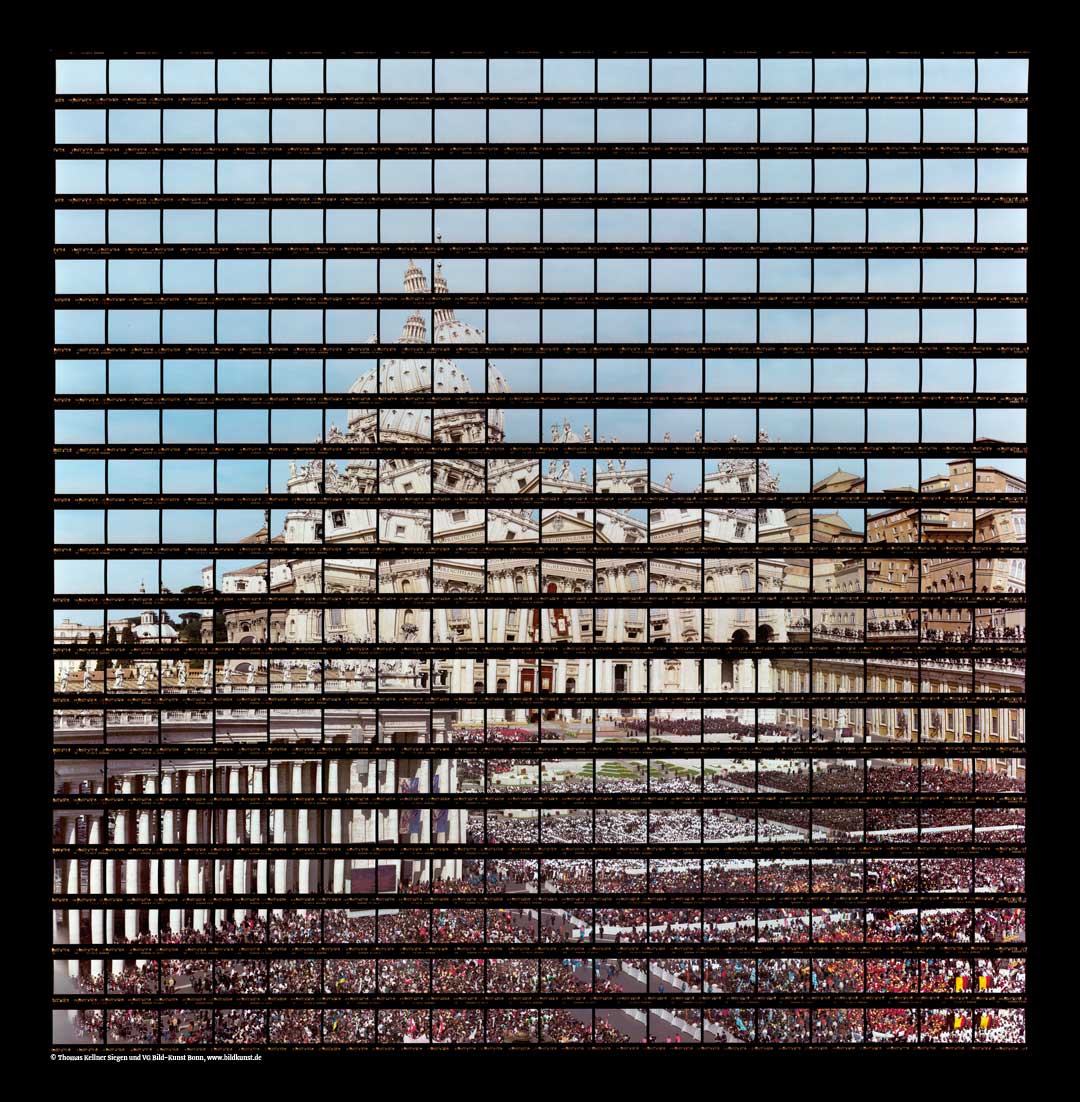
Taken away by the Secret Service in Argentina
Another interesting story happened in Argentina. There I wanted to photograph the Casa Rosada for the g20 project, it was the last day before departure and bright sunshine. The scouting had been done with everyone and the basis for photographing was actually optimal until a policeman came up to me and emphatically sent me away from there. The presidential palace would have given the order to do this, but the Argentines, who often disliked state power, became very incensed by this. They started shouting and whistling and with the attention drawn to me, the Secret Service finally summoned me to the Casa Rosada. I was led in and met by five armed people, I had to show them my ID, my camera and my sketchbook, I was completely checked. The procedure took quite a long time and when I finally had permission to photograph the Casa Rosada, the following problem arose: the order against me was already out and still valid and the police chief was already in his closing time. This delayed the process even more and the Casa Rosada has to be photographed at sunset, so I ran out of time. But in the end I was able to take a picture of the Casa Rosada after an exciting day. Another tricky story took place in the Ruhr area, more precisely at the Zollverein colliery in Essen. The colliery forbade photography of the winding tower because they own the copyright on the tower, I had been able to sign a copyright contract regarding the use of the building as a logo or in the press, this contract had nothing to do with art and would also have cost me 400 euros fee and a print. For me this was a totally unfair and disproportionate demand, so I found a loophole. I stood on the pavement and photographed the tower with a lens from further away, as you are allowed to photograph any building that is visible from the pavement unconditionally.
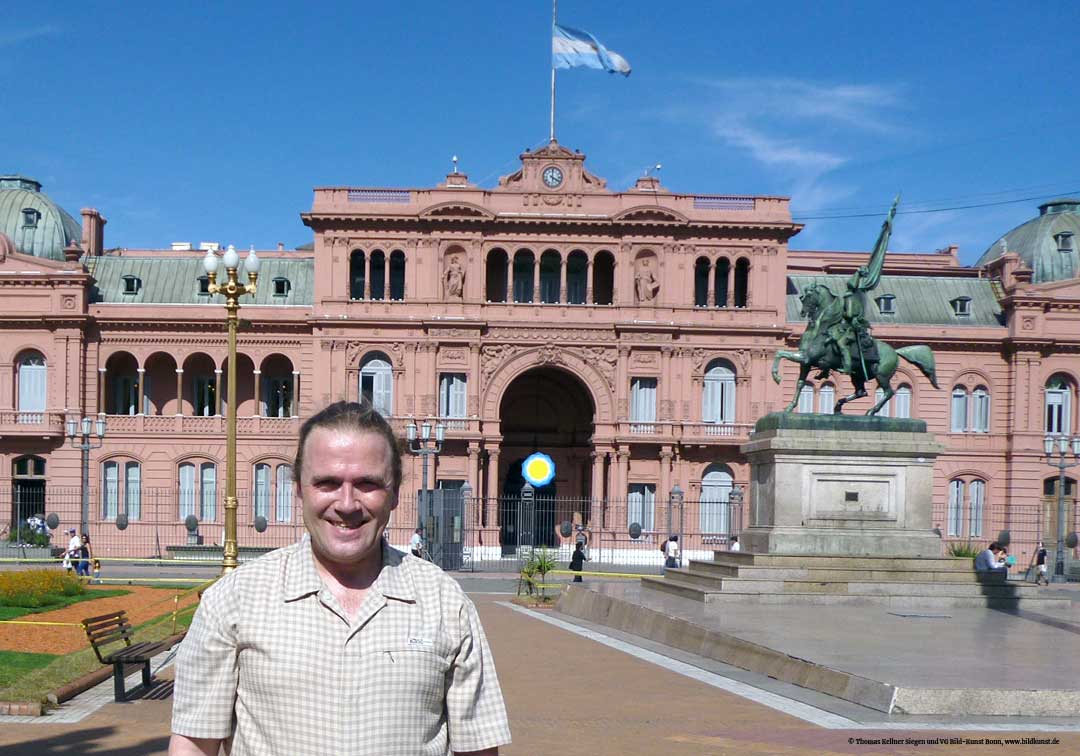
Time out in summer for self-reflection and inspiration for projects
I could go on and on, but before I digress too much into storytelling, I'd better move on. When working on travel, you have to get a direct overview of everything you need to produce, which includes footage for social media and pre-work documentaries. I used to think of travelling as time off. During my studies, I took an excursion to Provence to draw and paint. We also once did an excursion to Venice with a course from art history, and I continued this time-out every summer for two years after graduation. In the summer I just quit my job for eight weeks and took a break, I just took my camera and my travel lab and took time to develop myself and my art. Since there were only text messages available at the time, but they were also very expensive and therefore little used by me, this time was also an opportunity to come to rest again and reflect. Other photographers often do something similar in winter and travel to the south to take time out, but for me the work always plays an important role. There's nothing but that blank page with space for new ideas and thoughts. I ask myself questions about what experiment I want to do next and what I want to do now and why. In this working process you practically fire yourself and your results, you always create new ideas until you find something that is suitable for a project. Sometimes you don't come up with your own motifs, but are made aware of them by others, for example in exhibitions. People can talk about their experiences at the border and vividly tell you which border crossing was the best place to go and what everything was like back then. In the exhibition on Tango Metropolis, many people told me about their journeys and the cities they had seen. Of course, all these stories give me many new ideas and suggestions for existing projects, but also for completely new things.
Projects about Abbey Lake and Stonehenge
But sometimes people specifically draw my attention to certain things, so I was once invited to Cardiff and was told about Abbey Lake, where the birthplace of photography is, and Stonehenge, the oldest architecture in the world. Of course, especially with such important places, there is pressure on me to create something brilliant and something great, that's how I felt when I took the Golden Gate Bridge. I donated the pictures I took at Abbey Lake and Stonehenge to the local museum, which asked me to do the Black & White exhibition years later. Generally it's difficult on the road as you sometimes need a car to get to your subjects or an assistant or translator to communicate and get around. I also make long-lasting friendships on such trips; I'm still in touch with assistants from Brazil and Sweden. But sometimes things go wrong, with Flucticulus it happened to me that I had a camera the wrong way round and so had to photograph everything again. Since my financial resources as an artist are limited, something like double development costs are a heavy burden on me. But I am grateful for the opportunity to do my job from anywhere in the world and still get to know so much of the different countries and cultures.
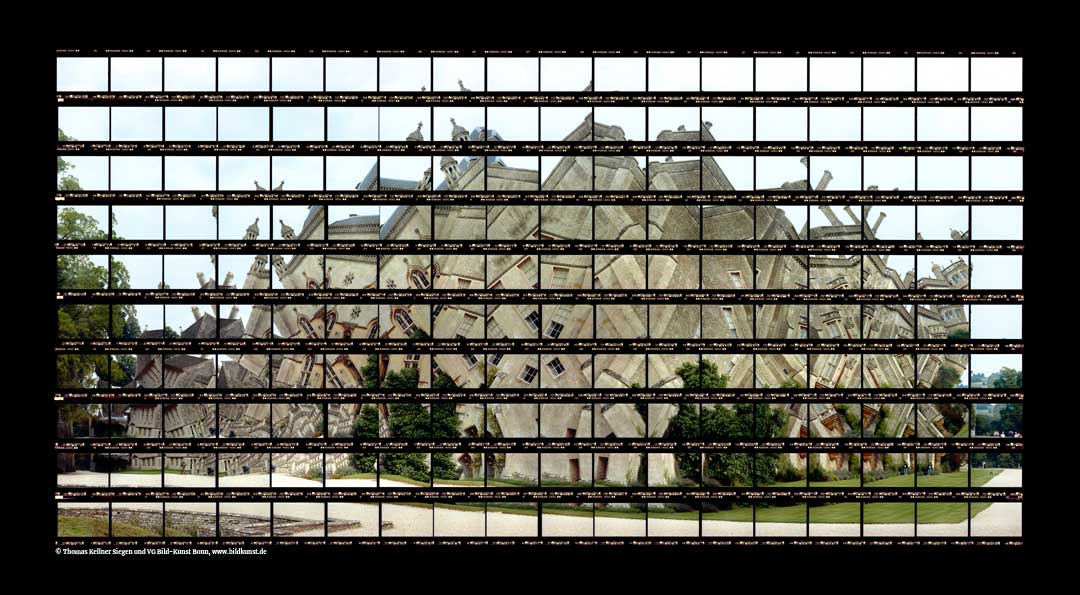
Author
Hannah Stöcking, 07.11.2001, Bottrop
Studies: Art History and Literature, Culture, Media
Internship: 2021 at Thomas Kellners Studio
Special Interests: Art, Literature, Music, Festivals & Concerts








